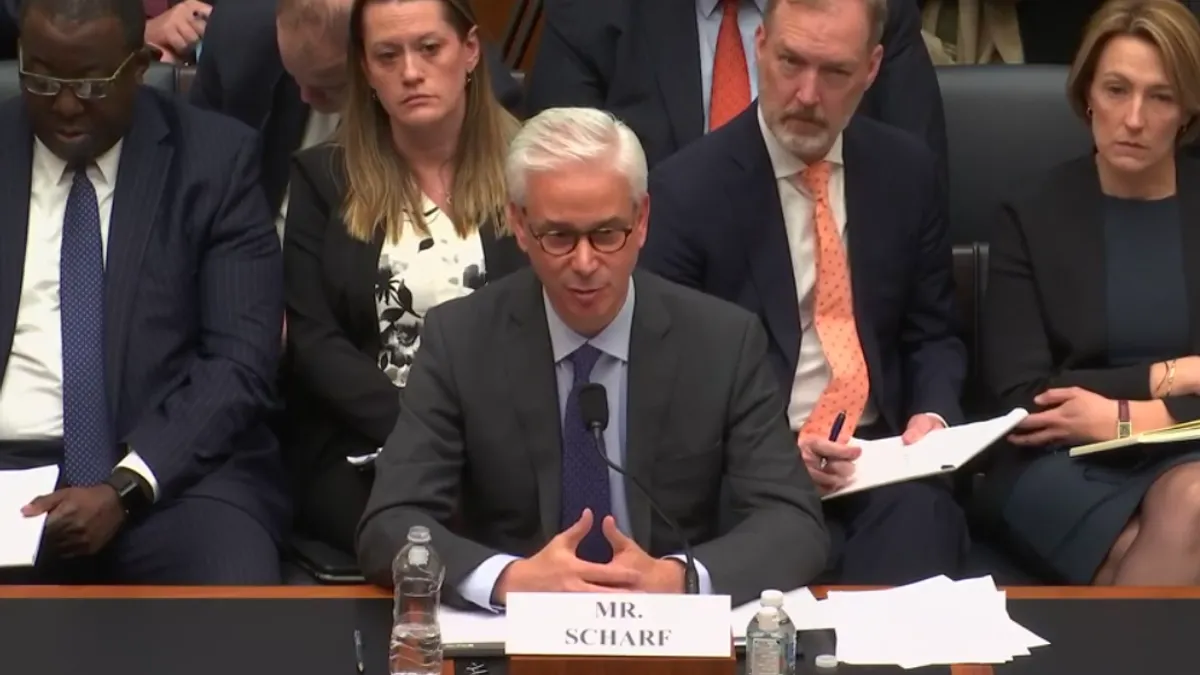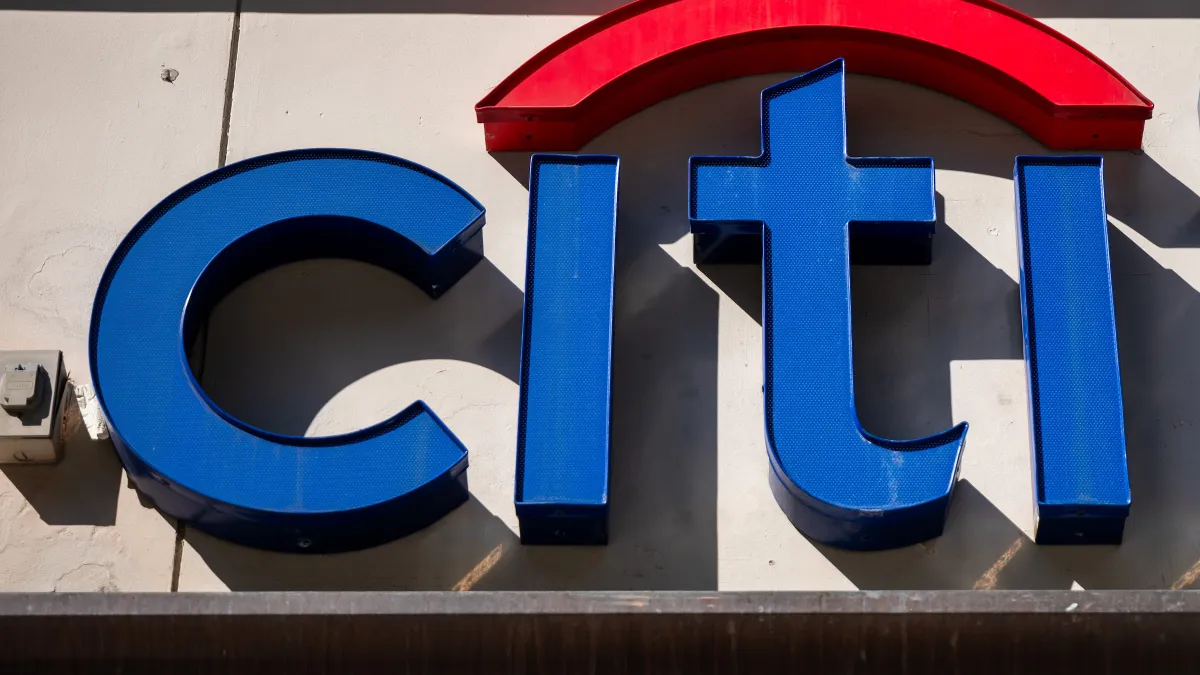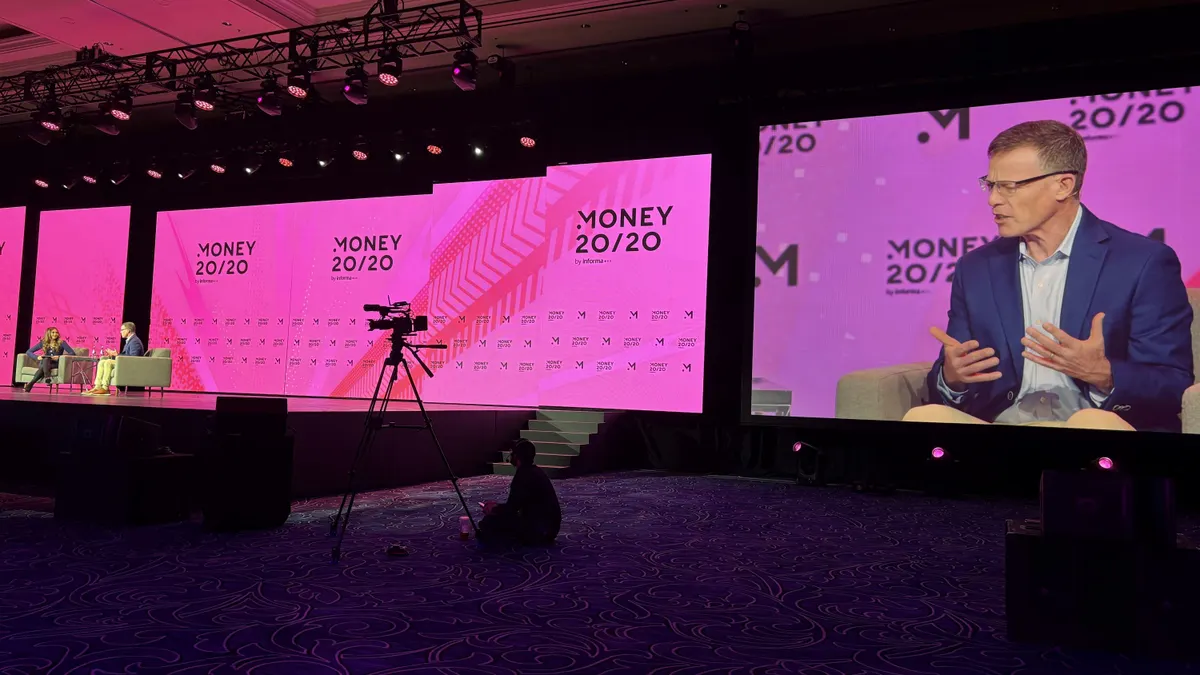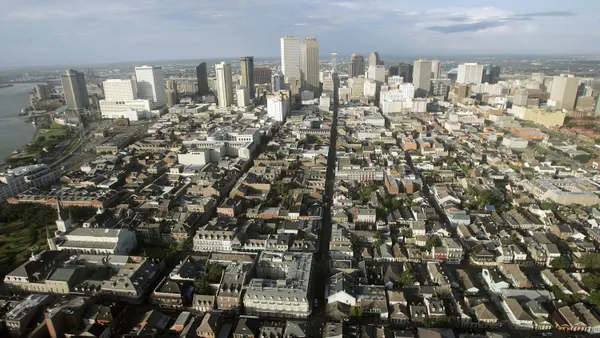Dive Brief:
- Wells Fargo will reduce its dividend from the 51 cents per share it will pay in the second quarter to a third-quarter figure it will reveal July 14 in its earnings statement, the bank said Monday.
- The move comes less than a week after the Federal Reserve said it would cap third-quarter dividends at the amount paid in the second quarter or the average payout of the last four quarters — whichever is lower.
- JPMorgan Chase, Bank of America, Citi, Morgan Stanley and Goldman Sachs said they were not changing their third-quarter dividend payouts, although the latter's stress-test performance led some analysts to predict it might have to shrink its balance sheet to keep paying shareholders the same.
Dive Insight:
Wells Fargo's move to cut its dividend was largely expected — Bloomberg analysts estimate a nearly 40%, or 20-cent-per-share, reduction. Wells Fargo shares are down 52% this year, according to the wire service, and the bank's net income has plummeted 89% from a year ago.
"There remains great uncertainty in the path of the economic recovery and though it’s difficult to accurately predict the ultimate impact on our credit portfolio, our economic assumptions have changed significantly since last quarter," CEO Charlie Scharf said in a Monday statement.
This marks the first time one of the biggest U.S. banks has reduced its per-share payout since the second quarter of 2009, according to The Wall Street Journal.
The Fed reportedly told banks to wait until Monday to reveal their capital plans for the third quarter, as well as the capital buffer they would have to maintain as dictated by the stress tests, according to American Banker. That buffer is the difference between the bank's capital level at the start of the "severely adverse" stress test and its projected level at the end, minus planned dividend payouts.
Citi, Bank of America and Wells Fargo reported 2.5% stress capital buffers. JPMorgan's was 3.3%. Morgan Stanley and Goldman Sachs, whose models are considered riskier and require a higher buffer, reported 5.9% and 6.7%, respectively.
Goldman said Monday it was confident it could keep its $1.25-per-share dividend the same because it has boosted its common equity tier 1 ratio to 13% in the second quarter, from 12.3% in the first. That's halfway to the 13.7% the Fed wants the bank to maintain by the end of the third quarter.
"We fully intend to continue this dynamic capital management while helping our clients continue to navigate challenging markets," Goldman Sachs CEO David Solomon said Monday.
Banks are expected to resubmit their longer-term capital plans in the coming months. The Fed will finalize banks' buffers levels by Aug. 31.
The stress test results appeared to hold little surprise for other big U.S. banks.
"These results are consistent with our expectations, and indicate that we have the capacity to withstand extreme stress," Citi CEO Michael Corbat said.














